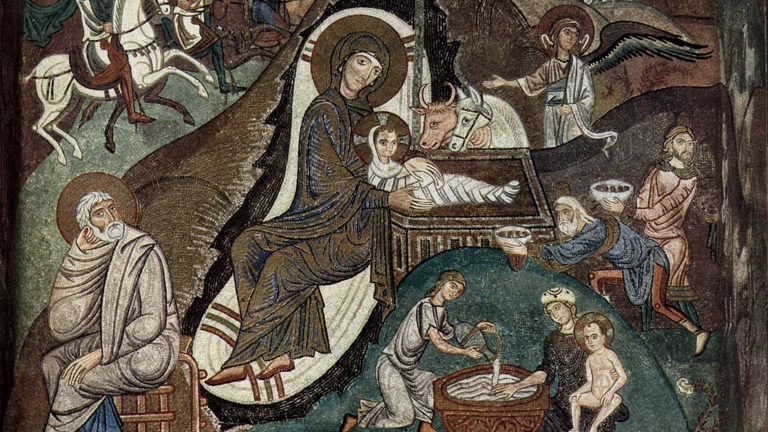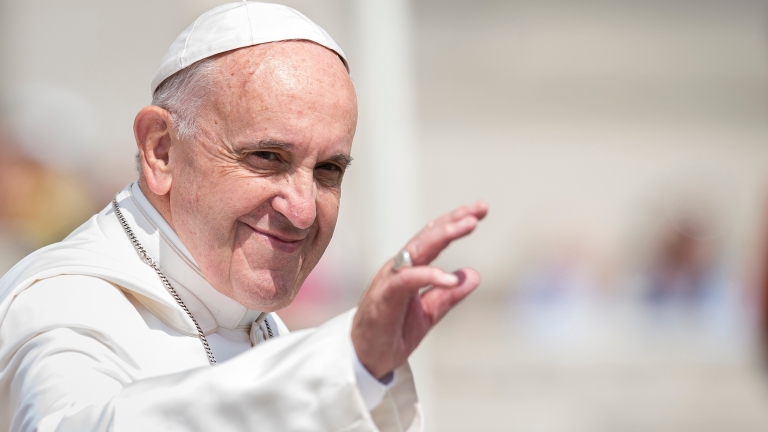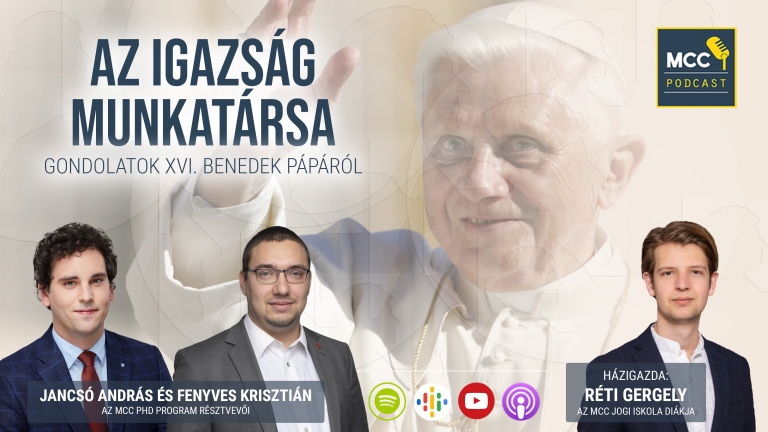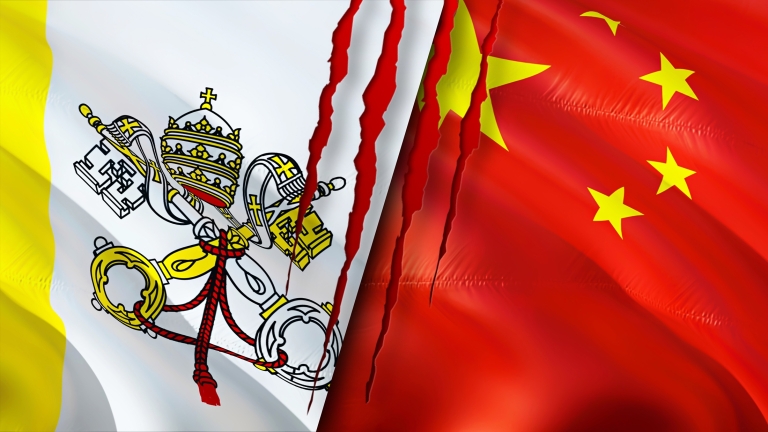Fenyves Krisztián katolikus teológusi diplomát és licenciátust szerzett a Pázmány Péter Katolikus Egyetemen, zongoratanári diplomát a Liszt Ferenc Zeneművészeti Egyetemen, valamint szaklicenciátust a Gregoriana Pápai Egyetem Cardinal Bea Intézetében. Tanulmányokat folytatott az Ankarai Egyetemen (Törökország), valamint a Bécsi Egyetemen (Ausztria), ahol a VDTR kutatóközpont tagja, s ezenfelül az Európai Katolikus Teológiai Társaság Fiatalok Kuratóriumának tagja. Jelenleg doktori tanulmányait végzi a patrológia (ókeresztény irodalom és történelem) területén. Kutatásának középpontjában az egyházatyák és a rabbinikus szerzők közötti exegetikai interakció áll, a vallásközi párbeszéd, valamint a vallásdiplomácia.

Fenyves Krisztián
Kutató
E-mail: mutasd
Egyetemi végzettség
Pázmány Péter Katolikus Egyetem - katolikus teológus - 2019
Pázmány Péter Katolikus Egyetem - teológiai licenciátus - 2021
Liszt Ferenc Zeneművészeti Egyetem - zongora; zene- és zongoratanár - 2024
Gregoriana Pápai Egyetem - szaklicenciátus - 2024
Tudományos fokozat
Pázmány Péter Katolikus Egyetem - Hittudományi Doktori Iskola - 2021 - Licenciátus
Pázmány Péter Katolikus Egyetem - Hittudományi Doktori Iskola - folyamatban - PhD
Egyéb akkreditált képzések
Liszt Ferenc Zeneművészeti Egyetem - Bartók Béla Zeneművészeti és Hangszerészképző Gyakorló Szakgimnázium - klasszikus zenész (hangszeres zenész (billentyűs)) - 2017
Oktatási tapasztalat
Bölcsészet- és Társadalomtudományi Kar - megbízással foglalkoztatott oktató - 2024
Szakmai tevékenység
Üldözött Keresztények Megsegítéséért és a Hungary Helps Program Megvalósításáért Felelős Államtitkárság (Miniszterelnökség, Külgazdasági és Külügyminisztérium) - gyakornok (Magyar Közigazgatási Ösztöndíjprogram) - 2022 február - 2022 augusztus
Magyarország Nagykövetsége a Szentszéknél és a Szuverén Máltai Lovagrendnél (Róma) - gyakornok (Magyar Közigazgatási Ösztöndíjprogram) - 2022 szeptember - 2022 december
Ösztöndíjak
Ankarai Egyetem - Erasmus+ - 2019 február - 2019 május
Bécsi Egyetem - Campus Mundi - 2020 február - 2020 június
Cardinal Bea Intézet (Gregoriana Pápai Egyetem) - licenciátusi ösztöndíj - 2021 október - 2023 június
Liszt Ferenc Zeneakadémia Baráti Köre - egyesületi ösztöndíj - 2020 november - 2021 április
Díjak
Pázmány Péter Katolikus Egyetem - Nemzeti Felsőoktatási Ösztöndíj - 2018
Pázmány Alapítvány - Kopits Imre Ösztöndíj - 2018
Erasmus+ díj - Turkish National Agency - 2019
Nemzet Fiatal Tehetségeiért Ösztöndíj - Emberi Erőforrások Minisztériuma - 2020
Beszélt nyelvek
angol - C1
német - B2
olasz - B2
Kutatási témák
patrisztika (ókeresztény irodalom és történelem)
Szentírás-értelmezés
patrisztikus és rabbinikus interakciók
vallásközi párbeszéd, keresztény civilizáció
vallásdiplomácia
Tagságok
Európai Katolikus Teológiai Társaság - Fiatalok Kuratóriumának tagja - 2023-
Magyar Patrisztikai Társaság - tag - 2023-
Bécsi Teológiai és Valláskutatói Központ - tag, kutató - 2023-
Joseph Ratzinger - XVI. Benedek pápa kutatócsoport (Szent II. János Pál Pápa Kutatóközpont, PPKE) - kutatócsoport tagja - 2023-
Jogbölcseleti tépelődések
A tárgynak a célkitűzése elmélyedés a Jog és Társadalom Műhely munkájában, bekapcsolódás a kutatásokba, az iskolatagok segítése a műhelyválasztásban, a Tudományos Diákköri dolgozatok, évfolyamdolgozatok, szakdolgozatok, műhelydolgozatok közös megvitatása. A junior kutatók és a műhelytagok is részt vesznek a közös munkában, hatékonyan segítik a többieket a jogelméleti elmélyedésben.Keresztény civilizáció: Sarokpontok filmen
A keresztény civilizáció elmúlt kétezer éve korántsem tekinthető felhőtlennek. Kiemelkednek belőle különböző sarokpontok, amelyek rányomták a bélyegüket a hagyomány további fejlődésére. Ilyenek lehetnek természetesen az alapító történetei, hasonlóképpen a misszió eseményei, nagy szentek föllépése, az egyházszakadások, valamint a hitbéli megpróbáltatások időszakai. Ezeknek a filmes megformálásával foglalkozunk a tárgy során.Ütközéspontok: a jog, a filozófia és a teológia határterületei
A társadalmi igazságosságot háromféleképpen fogja föl a gondolkodástörténet (államelmélet, jogbölcselet, politikai filozófia, társadalomelmélet, társadalombölcselet): mint jólétet, mint szabadságot, és mint erényt. Gyakorlati vitákra fókuszáló tárgy során az igazságosság ezen elméleteit tekintjük át a jog, a filozófia és a teológia szemüvegén keresztül.Kiemelt publikációk
Rabbinikus és patrisztikus exegetikai interakciók az ősbűn következményeinek (Ter 3,16-21) értelmezésében / Exegetical Encounter: Rabbinical and Patristic Interactions regarding the Interpretations of the Consequences of the Fall (Gen 3:16-21)
In: Studia Patrum 12 (2024)
This analysis intends to examine the interpretation of the Church Fathers and Rabbis on Gen 3:16–21 and to explore of a possible exegetical encounter between the rabbinic and Christian traditions. Christian paradigmatic interpretation was developed on the basis of an existing Jewish fall-tradition, which was adopted in the earliest phase of emerging Christian identity. The central question, I would suggest, is the general Christian interpretation of Adam as the counter pole of Christ, implying a widespread reading of the primordial decrees as pivotal for Christian doctrine. Genesis Rabbah’s reading strategy would seem to counter the emphasis on the text as one of central importance quite effectively. Against this background, it is not unlikely that the remarkably extensive rabbinic exploration of these verses is to be seen as a form of “pre-emptive exegesis,” which distracts the attention of the reader from the narrative context of sin and punishment, and it leads it in other directions. This paper explores the interpretation of the above-mentioned verses through the Commentary on Genesis of Didymus the Blind (school of Alexandria) and the Genesis Rabbah (midrash compilation), demonstrating the similarities and the differences of the thoughts and approaches in the various traditions.
"In the Image of God He Created Them": Gen. 1:26-28 in the Light of Patristic and Rabbinic Literature
In: I volti di Dio nel cristianesimo antico. Secc.I-IX (SEA 165, Nerbini) (2024)
Recent research has repeatedly found that rabbinic and patristic traditions of interpretation have at some points come surprisingly close to each other. This analysis intends to examine the idea of imago Dei in the ancient Christian times based on Gen. 1:26-28 and to explore of a possible exegetical encounter between the rabbinic and Christian traditions, demonstrating the similarities and the differences of the thoughts and approaches in the various traditions. Starting with the analysis of the key terms, as tselem and demuth and εἰκών - ὁμοίωσις, special attention is paid to how Gen. 1:26-28 defines the divine-human relationship, noting the significance of the fact that the term tselem which is frequently used in an inculpatory sense for man-made images of God, as well as the term demuth, of which Isaiah claims (40:18), no demuth or likeness can be applied to God – are employed in denoting man as an image and likeness of God. With the question of the imago Dei after Eden the whole context will be the first three chapters of Genesis, since the serpent’s audacious promise, “you will be like God” (Gen. 3:5) and the men’s possibly image the triune God in a broken world is at the centre of the Church Fathers’ interest.
The Future of Europe: The Way of Dialogue
In: Standing Before the Challenges of the Future (Angelicum Press) (2024)
This treatise discusses the future of Europe as a path of dialogue. Many chapters in intellectual history are written in the context of the relationship and dialogue between the Church and the world. In this regard, the question arises: why should a Christian study Judaism? The answer offered is that Christianity is deeply rooted in Judaism. Therefore, to understand ourselves, we must comprehend the roots and the people who are those roots. Of course, all of this touches upon our identity and questions of reciprocity. The author emphasizes that when discussing European Jewry and Christianity from a historical perspective, the first thing that comes to mind is not necessarily a harmonious coordination and coexistence of Jews and Christians. Despite everything, Judaism cannot be separated from Christianity in shaping the European identity. What is important today for preserving the identity of Europe is the value of preserving the traditional family, the sanctity of life, marriage, and the fundamental human rights granted to humanity by its Creator – all of which are values that should awaken Europe. Ultimately, throughout history, there have been many interactions between Judaism and Christianity in Western culture. These two intellectual influences have acted in an integral relationship, shaping Western culture.
Nikaia és Tertullianus, avagy ὁμοούσιος és una substantia / Nicaea and Tertullian, or ὁμοούσιος and una substantia
In: Studia Theologica Transsylvaniensia (StThTr 26) (2023)
Alleged Western influences on the historical and theological proceedings of the first ecumenical council in Nicaea (325 AD) have long been a matter of scholarly discussion. The idea of Western influence on the Nicene creed – and even the Western origin – has found much support. Scholars have attempted to establish a relationship between the strong emphasis on the divine unity by the early Western theologians like Tertullian, on the one hand, and in the Nicene creed on the other. In the last forty years, the theory of Western influence has been seriously questioned and has suffered severe criticism. The following brief study will examine the word ‘homoousios’, which is one of the most important terms in the Christian theological vocabulary, since it was used at the Council in Nicaea to express the divine consubstantiality of the Son with the Father. However, long and complicated debates have not yet produced any significant agreement among scholars concerning its origin and meaning. The study’s further aim is to demonstrate that the proceedings of the council of Nicaea took place with considerable involvement of Western theology. At the very least, the Western influence was not excluded.
Az izajási próféciák fordításainak teológiai profilja / The Theological Profile of the Translations of Isaiah’s Prophecies
In: Fiatal kutatók és doktoranduszok XI. nemzetközi teológuskonferenciájának tanulmánykötete / Volume of the 11th conference of junior theologians and doctoral students (2022)
The notion of a theological profile is borrowed from Michael P. Weitzman and it refers to the interpretative divergences from the Hebrew source text that imply a particular theological view; we investigate the theological profile of the Isaiah’s prophecies, especially the translations of the songs of the suffering Servant. Based on the Hebrew (Masoretic text, Dead Sea Scrolls), Greek (LXX, Aquila, Symmachus, Theodotion) and Latin (Vetus Latina, Vulgata) texts, the characteristics and development of post-biblical Judaic and early Christian messianic interpretation are at the forefront of our research. The history of interpretation shows that the suffering and death of the Messiah appears as a kind of distinctive indicator, even though Daniel Boyarin argues that the (re)interpretation of Isaiah 53 shows that the concept of the Messiah suffering and giving his life is an integral part of ancient Jewish hermeneutics; all this can be reviewed through the Pesikta Rabbati homiletic midrash. Our textual criticism is discussed on the basis of the bilateral exegesis and translation of St. Jerome, bearing in mind the translational procedure and changes of the Church Father: for example, at least 80 cases in Quaestiones Hebraicae in Genesim where a „solution” of the text is given which does not correspond to the Vulgate translation; and on approximately 24 occasions Jerome prefers to follow LXX in his Vg, even though in QHG he has expressed reservations about the former.








